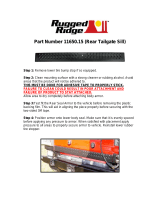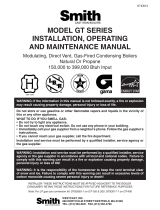
Installation & Operation Manual
1 Determine water heater location
8
The Armor water heater gas manifold
and controls met safe lighting and other
performance under tests specified in ANSI
Z21.10.3 – latest edition.
Failure to keep water heater area clear and
free of combustible materials, gasoline, and
other flammable liquids and vapors can
result in severe personal injury, death, or
substantial property damage.
Installation must comply with:
• Local, state, provincial, and national codes, laws, regulations,
and ordinances.
• National Fuel Gas Code, ANSI Z223.1 – latest edition.
• National Electrical Code.
• For Canada only: B149.1 Installation Code, CSA C22.1
Canadian Electrical Code Part 1 and any local codes.
Before locating the water heater, check:
1. Check for nearby connection to:
• Water piping
• Venting connections
• Gas supply piping
• Electrical power
2. Locate the appliance so that if water connections should
leak, water damage will not occur. When such locations
cannot be avoided, it is recommended that a suitable
drain pan, adequately drained, be installed under the
appliance. The pan must not restrict combustion air
flow. Under no circumstances is the manufacturer to be
held responsible for water damage in connection with
this appliance, or any of its components.
3. Check area around the water heater. Remove any
combustible materials, gasoline and other flammable
liquids.
4. The Armor water heater must be installed so that gas control
system components are protected from dripping or spraying
water or rain during operation or service.
5. If a new water heater will replace an existing water heater,
check for and correct system problems, such as:
• System leaks causing oxygen corrosion or heat exchanger
cracks from hard water deposits.
Provide clearances:
Clearances from combustible materials
1. Hot water pipes—at least 1/4" from combustible materials.
2. Vent pipe – at least 1" from combustible materials.
3. See FIG.’s 1-1 and 1-2 on page 9 for other clearance
minimums.
Clearances for service access
1. See FIG.’s 1-1 and 1-2 on page 9 for recommended
service clearances. If you do not provide the minimum
clearances shown, it may not be possible to service the
water heater without removing it from the space.
Closet and alcove installations
This appliance requires a special venting
system. If using PVC the vent connection
to the appliance must be made with the
starter CPVC pipe section provided with
the appliance. The field provided vent
fittings must be cemented to the CPVC
pipe section. Use only the vent materials,
primer and cement specified in this manual
to make the vent connections. Failure to
follow this warning could result in fire,
personal injury, or death.
For closet and alcove installations as
shown in FIG.’s 1-1 and 1-2, CPVC
vent material must be used inside the
structure. The ventilating air openings
shown in FIG.’s 1-1 and 1-2 are required
for this arrangement. Failure to follow
this warning could result in fire, personal
injury, or death.
WARNING
WARNING
NOTICE
WARNING
A closet is any room the water heater is installed in which is
less than 86 cubic feet for AWN151 models, 106 cubic feet
for AWN200 models, 120 cubic feet for AWN286 models, 165
cubic feet for AWN400 models, 191 cubic feet for AWN501
models, 223 cubic feet for AWN601 models, 247 cubic feet
for AWN701 models and 278 cubic feet for AWN801 models.
An alcove is any room which meets the criteria for a closet
with the exception that it does not have a door.
Example: Room dimensions = 4 feet long, 5 feet wide, and
9 foot ceiling = 4 x 5 x 9 = 180 cubic feet.
WARNING
This appliance is certified as an indoor
appliance. Do not install the appliance
outdoors or locate where the appliance will
be exposed to freezing temperatures or to
temperatures that exceed 100°F.
Do not install the appliance where the
relative humidity may exceed 93%. Do not
install the appliance where condensation
may form on the inside or outside of the
appliance, or where condensation may fall
onto the appliance.
Failure to install the appliance indoors could
result in severe personal injury, death, or
substantial property damage.





















